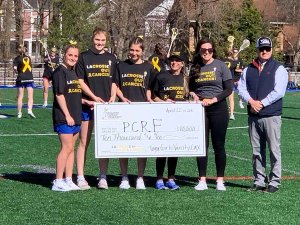NEW YORK — The sixth annual Invasive Species Awareness Week starts next week, going from July 7 to July 13, as various organizations across New York hold programs to instruct and education the public in identifying and handling the various invasive species in and around the state.
“Every year we have a new theme,” said Emma Antolos, Invasive Species Education and Outreach Coordinator at the New York State Department of Environmental Conservation. “This year’s theme is ‘Early Detection, Explore, Observe, Report,’ and that theme, we want to highlight the importance of detecting infestations of invasive species early, which always increases the successive response record.”
An invasive species is any organism, plant, animal, insect or other, which is non-native to the area. For example, the recent water chestnut pull in Fish Creek, hosted by the Capital Mohawk Partnership for Regional Invasive Species Management (CapMo PRISM), was a program to remove an invasive species, the water chestnut, from a local ecosystem.
“We are one of eight PRISMs across the state,” said Kristopher Williams, PRISM Head Coordinator. “We cover 11 counties in the area, it’s approximately 3 million acres. We’re responsible for providing education and outreach regarding invasives to the public.”
During Invasive Species Awareness Week, each PRISM and partner puts on various events. “You might go to the Western New York PRISM and they might hold 20, 30 events during that week,” Williams said. “We’re probably around 20 to 25 right now, with both PRISM-led events and partner-led events.”
According to CapMo PRISM’s Event Calendar, some of the upcoming local events include the “Saratoga Springs Public Library lecture series invasive species: roadside invaders” at the Saratoga Public Library and the “Wilton Wildlife Preserve invasive species lecture and interactive woodswalk with iMapInvasive mobile phone app” at the Wilton Wildlife office.
Williams explained that invasive species are split into four tiers, based on how entrenched they are in the new ecosystem. A tier one species, like the spotted lantern fly, is in a nearby area, but has not crossed into PRISM’s area yet; while a tier four species, like Japanese knot weed, is so far into the ecosystem that most efforts are for management and containment, rather than removal.
He continued by saying that CapMo alone monitors 168 different invasive species, and that one of the biggest problems in telling people how to handle invasive species was that each species has its own removal method.
For example, while one species might be easy enough to remove by just running a lawn mower over it, Williams said that for Japanese knot grass “when you mow it, the fragments get distributed on the mower dock and they spread, and those little fragments can grow roots and spread it, actually.”
Additionally, there are other factors, such as whether the land is public or private. As a result, there is no single way to remove an invasive species from an area. Rather, PRISM uses Integrated Pest Management to develop and plan to deal with each species uniquely.
The strategy has worked in the past. Antolos said that when she was growing up on Long Island, everyone knew about the Asian longhorned beetle.
“Asian longhorned beetle is an insect from Asia that made its way to Long Island in the New York City area, and through public awareness campaignsandtheUSDA’sefforts as well as the Departments of Agriculture and Markets, we’ve actually really been able to actually contain Asian longhorned beetles to that one part of the state and it has not really spread up north to upstate New York.
The average person still has a role to play in management though. PRISM and their partners hold programs throughout the year to help educate the public about how to identify invasives. If you manage to identify one nearby, you can call your local PRISM to notify them of the species’ location.
Alternatively, the phone application IMapInvasives allows you to make note of where you found an invasive species, what species you specifically found, and uploads the data to a network of information to track the various organisms.
For more information, call CapMo PRISM at 518-321-0189 or go to the New York Invasive Species Information website, at nyis.info.




 How to resolve AdBlock issue?
How to resolve AdBlock issue? 


































